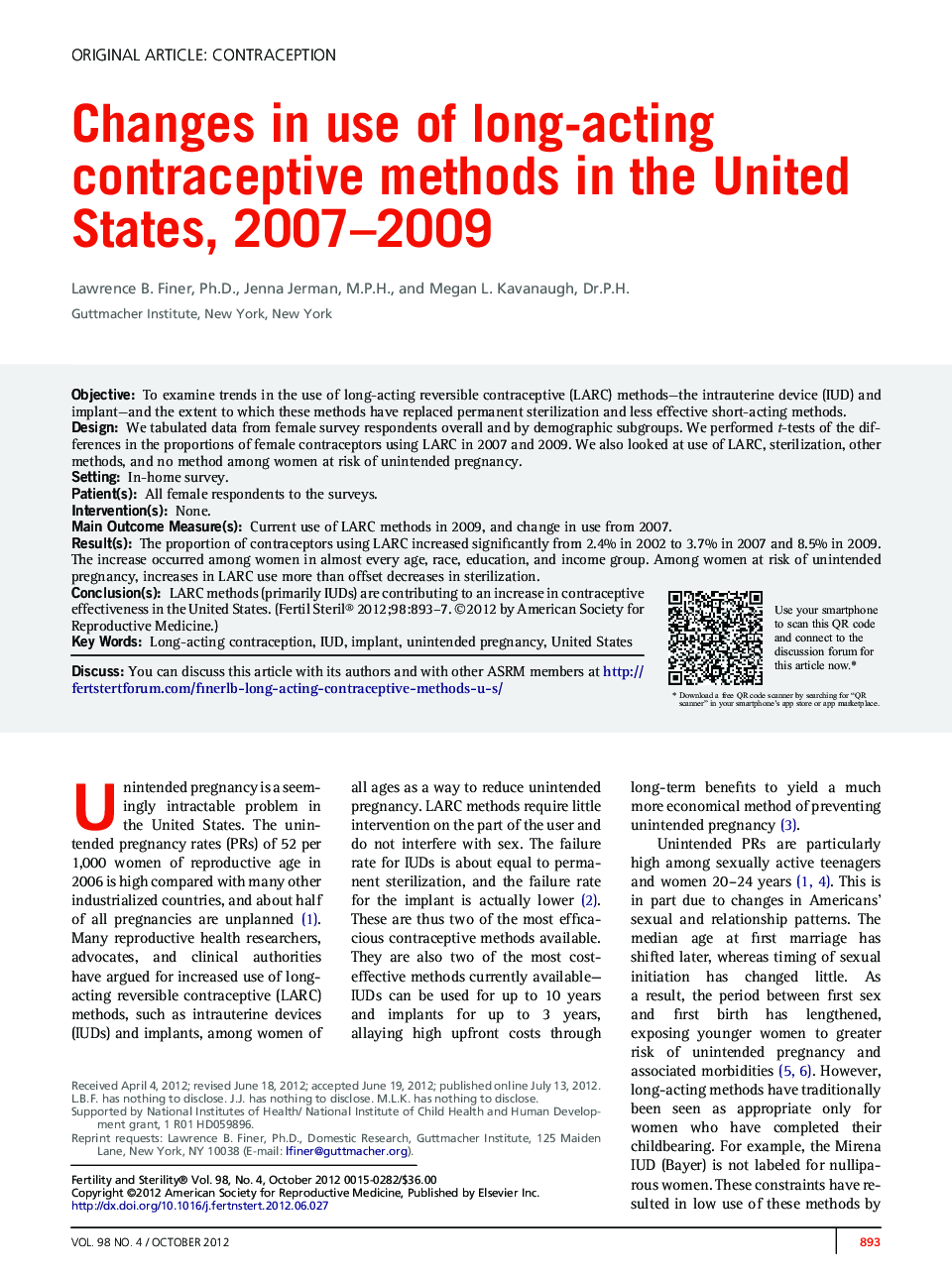| Article ID | Journal | Published Year | Pages | File Type |
|---|---|---|---|---|
| 3937128 | Fertility and Sterility | 2012 | 5 Pages |
ObjectiveTo examine trends in the use of long-acting reversible contraceptive (LARC) methods—the intrauterine device (IUD) and implant—and the extent to which these methods have replaced permanent sterilization and less effective short-acting methods.DesignWe tabulated data from female survey respondents overall and by demographic subgroups. We performed t-tests of the differences in the proportions of female contraceptors using LARC in 2007 and 2009. We also looked at use of LARC, sterilization, other methods, and no method among women at risk of unintended pregnancy.SettingIn-home survey.Patient(s)All female respondents to the surveys.Intervention(s)None.Main Outcome Measure(s)Current use of LARC methods in 2009, and change in use from 2007.Result(s)The proportion of contraceptors using LARC increased significantly from 2.4% in 2002 to 3.7% in 2007 and 8.5% in 2009. The increase occurred among women in almost every age, race, education, and income group. Among women at risk of unintended pregnancy, increases in LARC use more than offset decreases in sterilization.Conclusion(s)LARC methods (primarily IUDs) are contributing to an increase in contraceptive effectiveness in the United States.
